Hemmed between the links of Craigielaw and the broad sands of Aberlady Bay, Kilspindieís property is shaped like a blunt peninsula. By the early 1880s the owner of Luffness Links expressed concern over the number of golfers covering the links. Luffness members knew this was the beginning of the end and a breakaway faction started playing over a course designed by Old Tom Morris adjacent (east) to the original design. After much failed negotiation over many years to secure a lease, the remaining Luffness members moved to the Craigielaw Links in 1898. A year later, the club changed its name to Kilspindie. Presumably the club was named after the ruined castle of the same name which is on the left side of the entrance road, just shy of the Cragielaw property. Nearby, Duck's Inn was formerly known as Kilspindie House, perhaps this is the source of the name. This magical 70 acres of golf was fashioned by AM Ross Jr and Ben Sayers. Willie Park Jr made some changes in 1908-09. Among the changes was the creation of the short opening hole and the 8th green moved closer to the water. Some 20 years later Braid was called in mainly to add bunkers and lengthen a few holes with extended tees. It is interesting to note that from day one the club welcomed societies as a way to subsidize operation costs of the course and house and that by 1925 there were over 6000 visitor rounds per year!
A second club plays over the links. Aberlady GC was formed in 1912 as an artisan club. Membership used to be restricted to 30 men living in Aberlady and any Kilspindie members living in Aberlady...this may still be the case.
Uniquely, there remain two stone structures on the course, Target on the 4
th and Magazine on the 12
th. Through the 1
st World War, the course was used as a rifle range. Notices of when the range was open were posted and golfers were forced to turn back at the 3
rd hole.
On a personal note, it is interesting that when Tantallon GC in North Berwick drafted their "Rules and Regulations" in 1896 they appointed five Luffness members. The connection runs deeper, as the man who suggested the club purchase what became the Tantallon Clubhouse, was a Luffness member, one JW MacCaul. AM Ross, the owner of the property was also a Luffness member!
Substantial changes to Kilspindie have taken place. For instance, the 2nd used to be the opening hole. However, I suspect the course probably feels essentially the same as it was over 100 years ago, with one major difference, there would have been unruly sand about the course which over time has been tamed. Kilspindie will remain an interesting study in architecture. You see, there is nay room to expand and today the course tips out at just over 5500 yards (daily tees are 5100 yards). An essential aspect of the design is the short two-shotter; there are eight in total which are less than 300 yards in length. Among this selection there are some fine holes which include 4, 6, 17 & 18. It isnít too difficult to find oneself out of position on these holes despite the relatively wide fairways. Needless to say, Kilspindie does need a bit of wind and hopefully firm ground to straighten its spine. I would have thought this isnít an unusual occurrence! There is only one place to hide from the wind and that is on the curious 9
th with its tee tucked in trees. The hole is currently being altered a bit to force golfers left due to the housing estate. In the not too distant future there will be trees blocking the view and providing safety for the nearby homes.
Kilspindie has an unusual par 3 opener. With the tee tucked between the very new proshop and house, the golfer is taken immediately to the bay with a view of the vast sands, various hills of Fife and bathing seals.
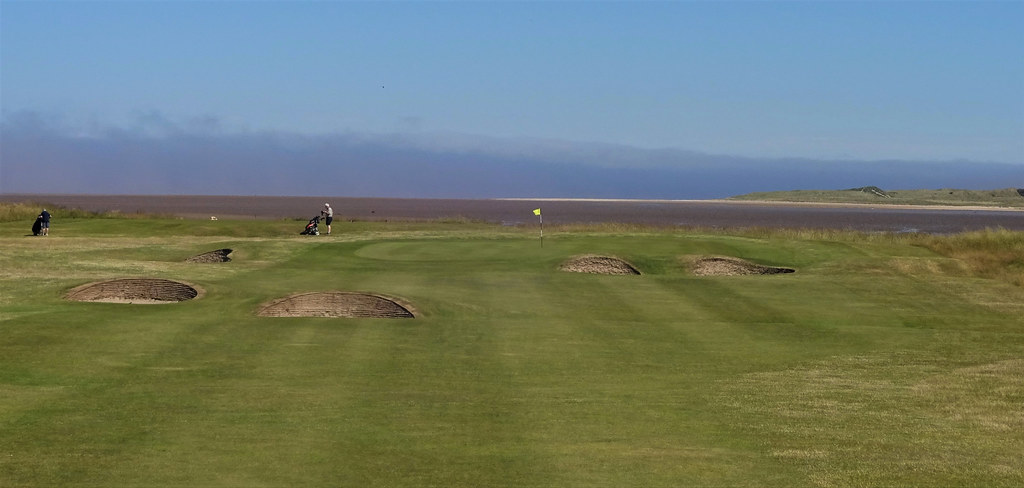
We could see the haar lingering over the sands, but we didn't reckon on being shrouded in the cold mist so quickly; the tee shot on the par 5 second.
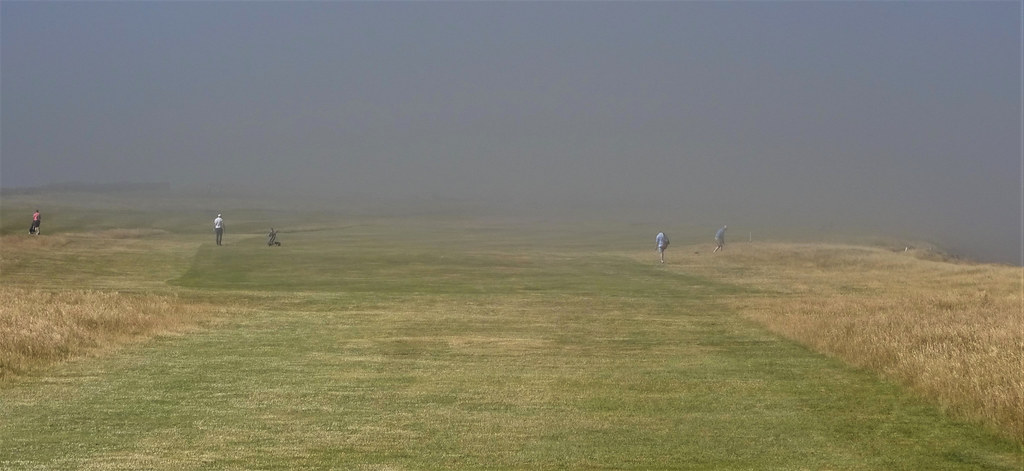

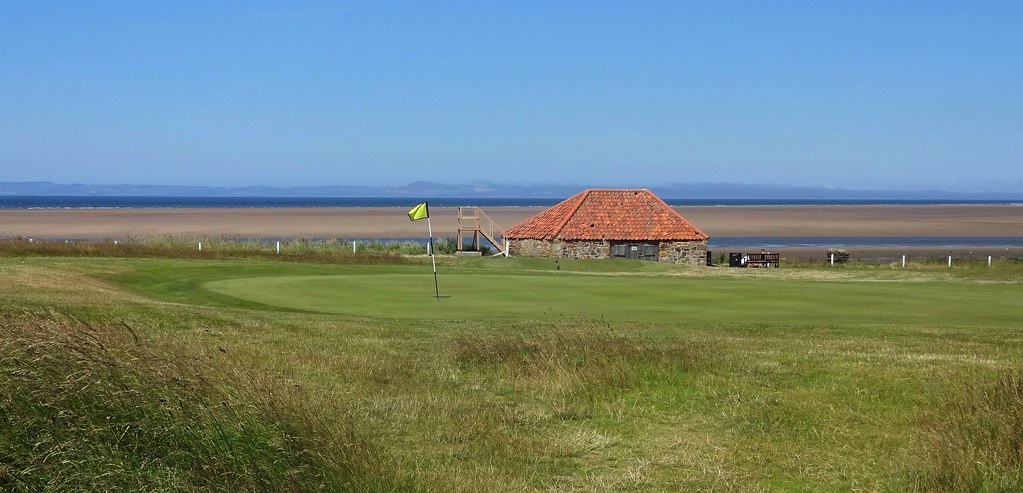
Kilspindie is short enough to play in less than three hours, but it seems rather shortsighted not to take time to smell the sea air and enjoy what nature has provided. Facing the bench toward the sea is a lovely touch.
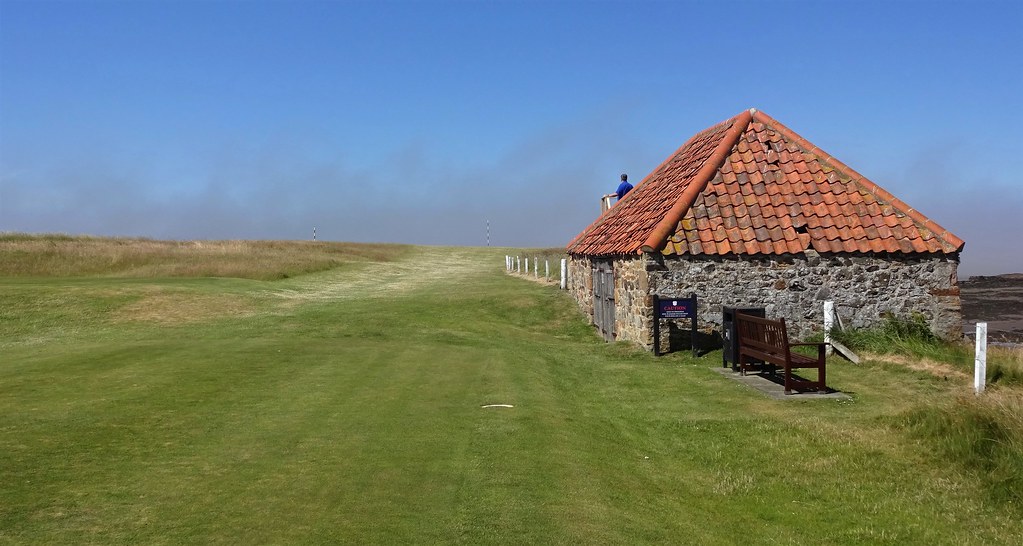
One of Kilspindie's best holes, the blind drive looks like this.
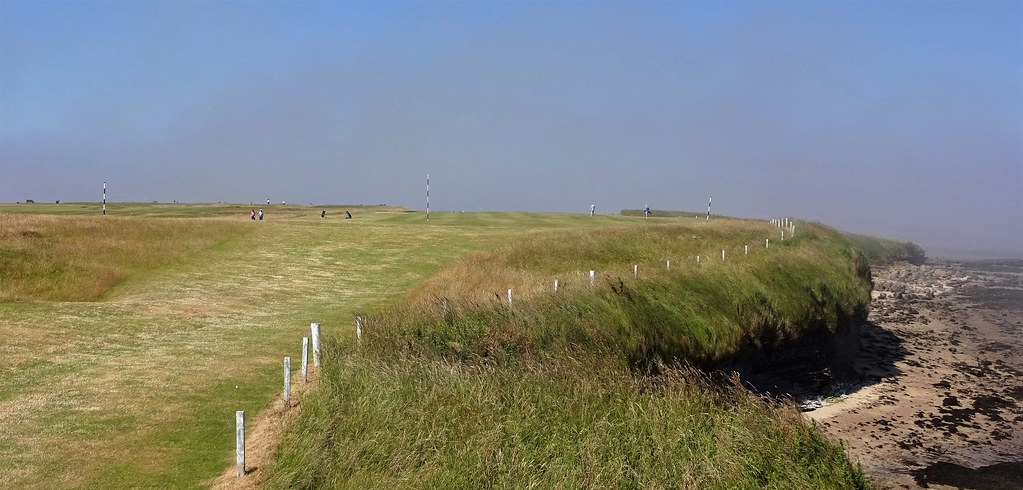
Today the hole was a bit timid due to a contrary wind, but one can easily imagine the difficulties involved on normal days.
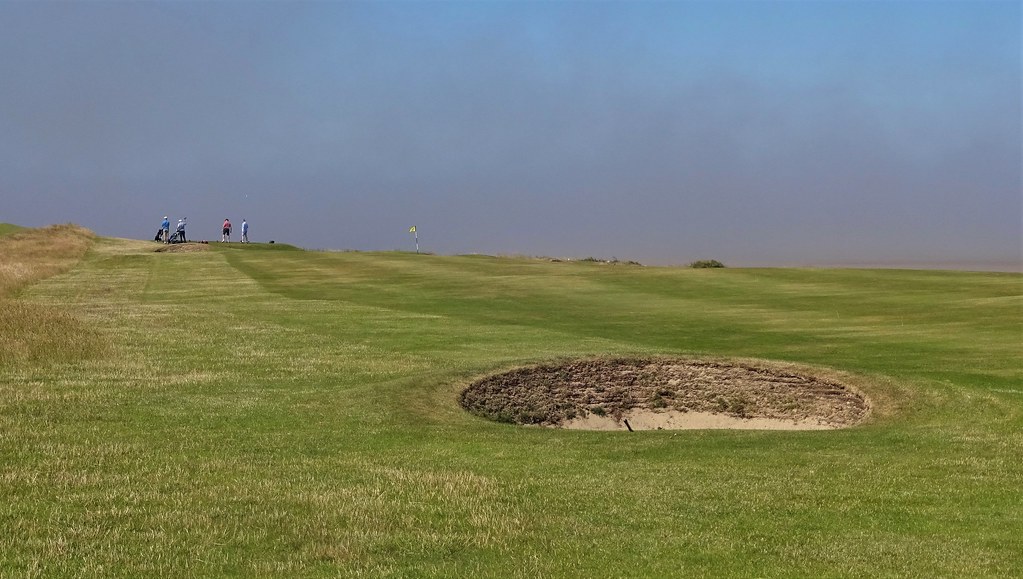
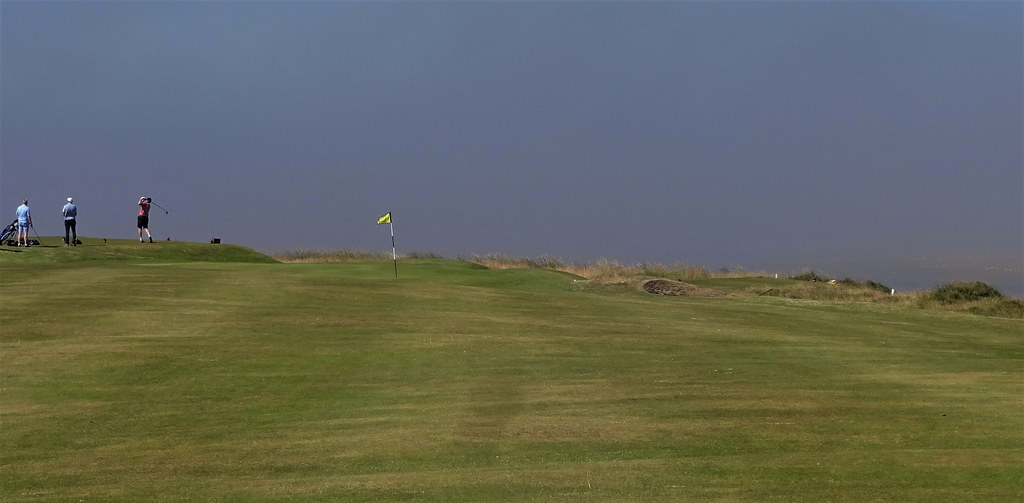
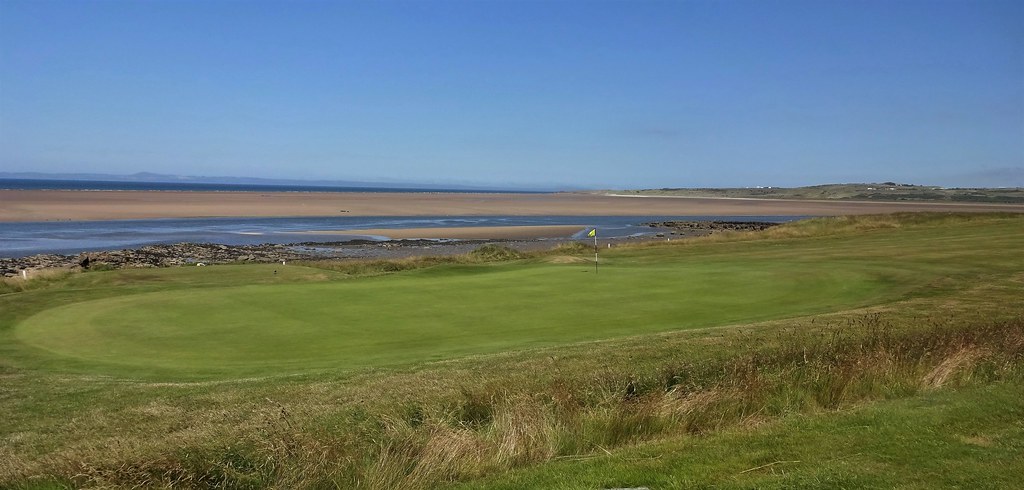
The haar threatened to return for several holes.
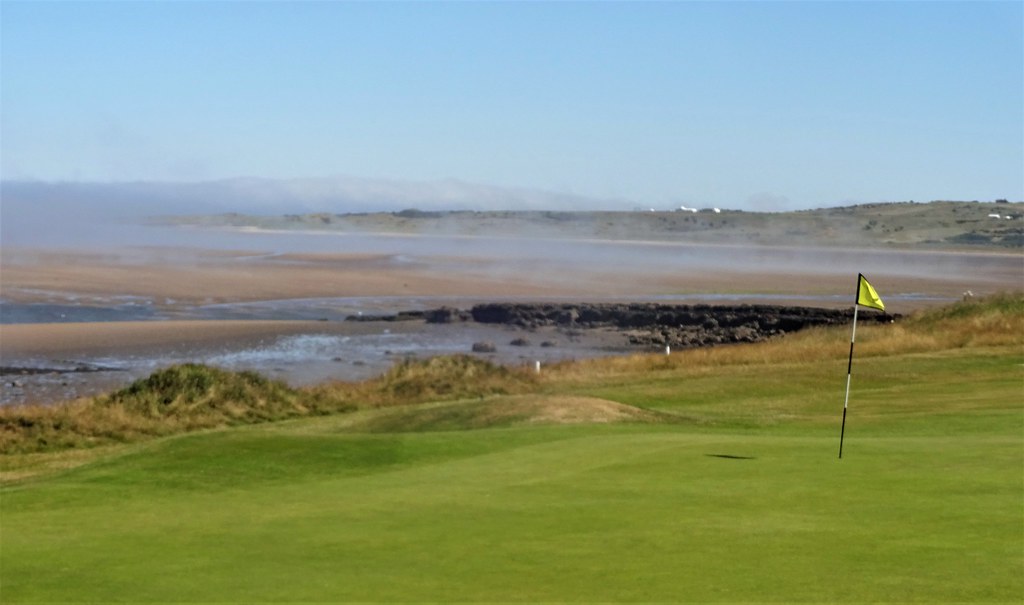
Perhaps the best hole on the course, the 4th continues the westerly route along the coast. Just shy of the golfers is a large hollow which used to be a bunker! Keeping perilously close to the beach provides the best line of approach, but it does take some fortitude.
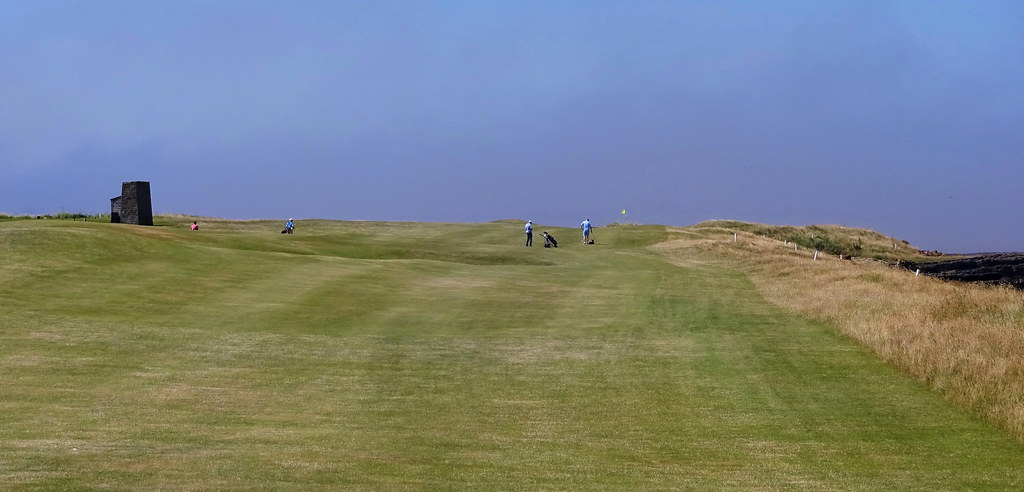
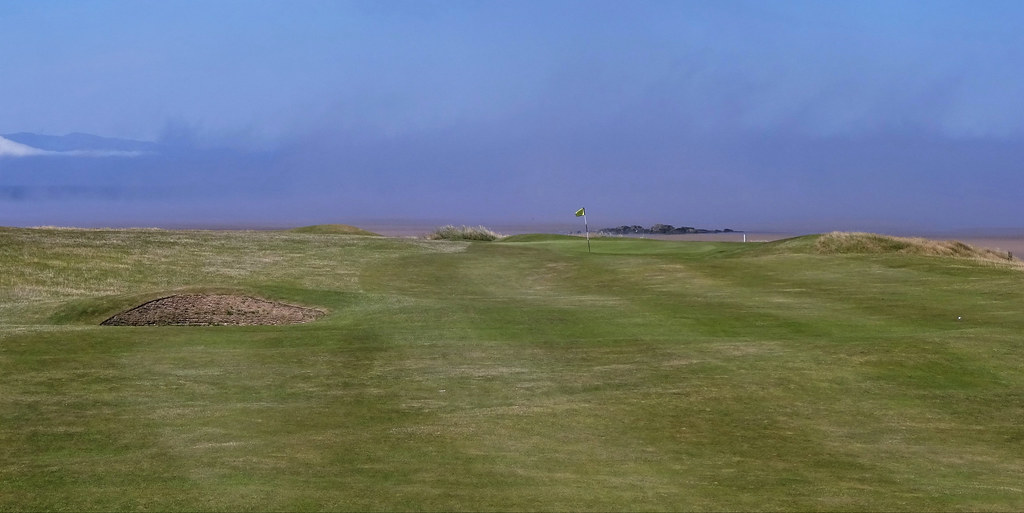
Astute golfers coming in from the right will use the sunken approach shy of the green as a feeder.
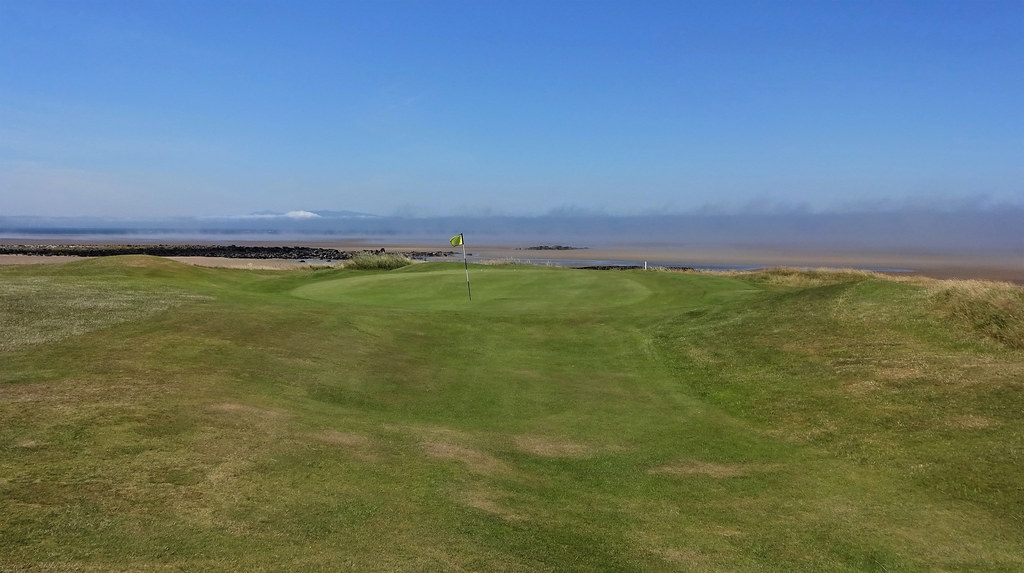
Thanks to Alex Herd dropping the land behind the green in 1930, one cannot go much past the green before becoming better acquainted with the seals.
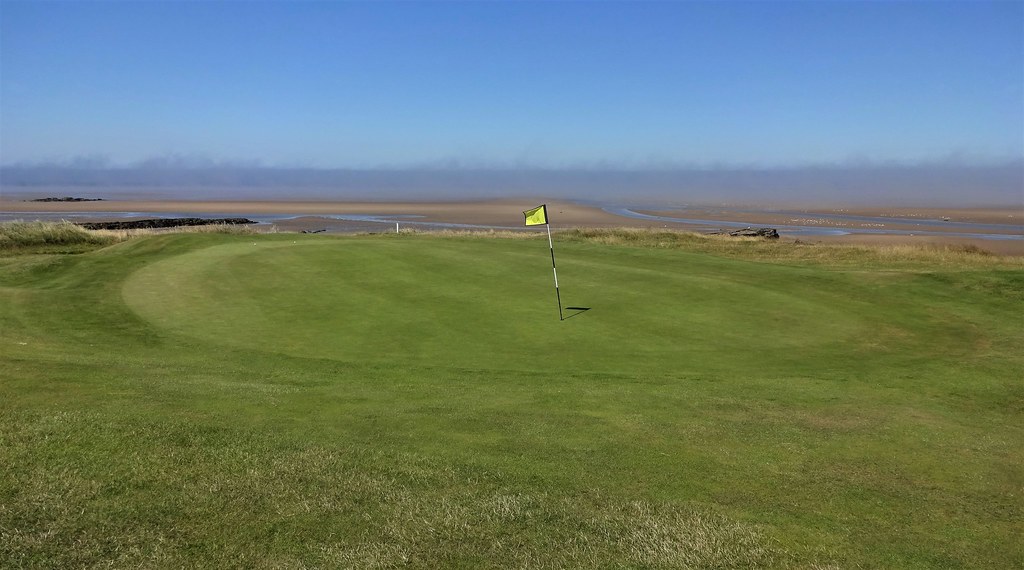
More to follow.
Ciao